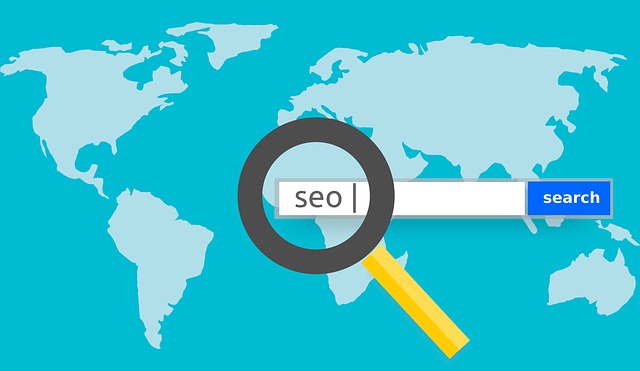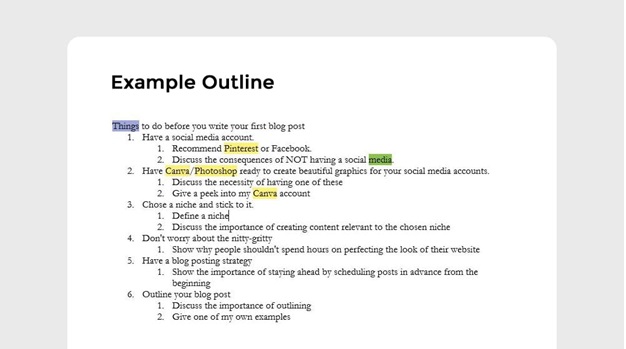Content Marketing
The Importance of Content for Your Business
Published
1 year agoon


In today’s fast-paced business environment, your technique of communicating with your audience, potential clients, and buyers must be original and intriguing. Content marketing is one of the best methods to accomplish this. Content marketing is a sophisticated strategy that entails creating and sharing valuable, timely, and consistent information in order to capture and hold your audience’s attention. If you want to learn more about these things, here are a few reasons why content marketing is so important for your company’s success.
Build brand awareness
Brand recognition can be increased quite effectively through content marketing. You can strengthen your brand and establish yourself as the top choice by continuously producing and releasing high-quality content that connects with your audience and everyone who might end up becoming your paying clients. People are more likely to remember your brand and look for it in the future if they see your content and think it is worthwhile. Because it can result in greater client loyalty, trust, and recognition, brand awareness building is crucial. Making instructional and engaging content can help you stand out from the competition in the congested digital market of today and leave a lasting impression on your audience.
Boost search engine rankings
The search engine rankings of your website can be considerably improved by producing high-quality content that is search engine optimized. Search engines recognize your website as a reliable source of information when you regularly produce valuable, pertinent material that uses relevant keywords and phrases. As a result, your website’s visibility and traffic may increase as its ranking in search engine results pages (SERPs) rises. Increasing your website’s search engine rankings is essential since it can encourage more leads and customers to visit your site, which could ultimately result in more sales. Still, doing this on your own might not be that easy, which is why you should think about turning to professionals. For instance, if your business is located in Australia, checking out experts in content creation from Melbourne might turn out to be the best way to go because these people know everything there is to know about creating amazing content and boosting your SEO score.
Attract more leads
Any business’ first priority is bringing in new customers. You may generate more leads for your website and social media sites by producing content that is catered to the needs and interests of your target audience. Once you have attracted potential leads to your website, you can request their contact information in exchange for valuable content like ebooks, whitepapers, webinars, or other lead magnets. By doing this, you can create a database of leads that you can grow over time and convert into devoted clients. The secret to drawing in and converting more leads is to provide high-quality content that speaks to the requirements of your audience.
Engage your audience
For your business to be successful, you must engage your audience. In order to build a relationship with your audience that goes beyond simply offering them a product or service, you can use content marketing to develop content that speaks to their needs and interests. You can develop interactions with your audience by producing informative material that offers guidance, amusement, or suggestions. Over time, this can boost audience engagement and loyalty. Creating engaging content for your audience can help you establish credibility, trust, and a strong online community that will support your company in the long run.
Create a competitive advantage
In the very competitive business world of today, it is crucial to set oneself apart from the competition. Content marketing is one strategy for doing this. You may position your company as the best one in your sector by producing and disseminating top-notch content that is educational, engaging, and pertinent to your target audience. This might make you stand out from the crowd and get more clients to your company. A thorough understanding of your target audience and a distinct brand voice are necessary for developing a competitive advantage through content marketing.
Increase conversions
Finally, content marketing can help you increase conversions. By providing valuable content that educates and informs your target audience, you can build trust and credibility. When your audience trusts your brand, they are more likely to buy from you. You can also use content to create a sense of urgency by offering time-limited promotions or limited-time discounts, which can lead to increased sales and revenue. Creating high-quality content that is both informative and persuasive can help you convert more leads into paying customers over time.
Content marketing is a crucial strategy that every business should be leveraging. It can help you boost your business and take it to the next level without even noticing it. To get the most out of your content marketing efforts, it is essential to have a clear strategy in place, including defining your target audience, creating quality content, and measuring the results. With the right approach, content marketing can be a powerful tool that can help you
Carolin Petterson is a Business Lady/Content Marketer and contributor for number of high-class business and marketing websites.


You may like


Thinking about the user and Google both at the same time is a difficult task. If you are planning to write SEO content that can attract your user along with Google bots, believe me, you have to really work hard.
Gone are the days when you could easily put up some keywords in the content, and Google will rank your content. Now, the competition is really high, and you have to really rock it on when it comes to SEO content writing.
No doubt, it takes time and effort to write SEO-optimized content, but it will surely pay you if you do it the right way. Often people think that SEO-optimized content is not user-friendly. However, in my personal opinion, this is just a misconception. If you are able to plan and structure your content well, you will not only optimize it for the search engines, but it will be really engaging for the readers as well. Let’s look at some of the crucial tips while writing SEO-optimized content.
Keyword Research Goes First
However, it’s not a writing tip but the most integral part before you plan to write SEO-optimized content. There are so many tools for conducting in-depth keyword research, but my personal favorite is SEMRush. Its features and keyword magic tools allow you to search more relevant LSI keywords around your focused keyword.


But, still, you have to rely on Google Keyword Planner when it comes to checking monthly searches and average CPC. For instance, if you are planning a blog of 1500 words, make sure that you have a focused long-tail keyword and 8 to 10 relevant keywords to support it.
Once you have selected the keywords, you are all set to write.
1. Structure Your Content
The first step would be to plan your complete content from the start till the end. You must know what you are going to write in the whole content. Moreover, plan the total number of words required to completely cover your topic. This step may also include researching the competitors and top-ranked web pages for your focused keyword.


As you are done analyzing the competitors, create an outline with headings and subheadings so that you have a complete structure of your content.
2. Plan Your Keywords
Often, it is observed that if you do not plan your keywords from the beginning, you end up messing with the keywords and placing them in irrelevant positions. Keeping in mind the density of your focused keyword and LSI keywords, plan them in the whole content.
For instance, if you have a long-tail focused keyword consisting of 4 words, then for 1500 words of content, you should include your focused keyword 4 to 5 times maximum. Include it in the H1, in your first paragraph, in the middle of the content, at the end and one time in the subheading as well. Spread the LSI keywords in the whole content where they set the best, making sure that they are not inserted together.
3. Create An Engaging Title
The next step is to create an engaging title for your content. You can include your focused keyword or a long-tail variation of your focused keyword in the title. If your focused keyword is buy assignment help, a long-tail variation would be, buy assignment help online.
You can also include a number to make it more engaging. Try to add catchy words and keep it under 50 to 55 characters with spaces.
4. Do Not Neglect Meta Description
Meta descriptions are a summary of your content which Google often uses to show under the title of your content as it appears on the search engine. It should be engaging and informative so that it encourages the user to click your webpage link.


The ideal length for a meta description is 141 to 148 characters. You can include your focused keyword along with a supporting keyword in your meta title. Keep it to 2-3 sentences making sure that you are delivering what your audience can expect in the content. Use an attractive tone to grab your readers’ attention.
5. Start It With A Boom
Now, this is the perfect moment to start with your content since you have planned it completely. The first sentence should be really engaging and thoughtful, which should give your readers a path to go through your whole content. Moreover, you need to use the focused keyword keeping the tone of the sentence natural. Ensure that readers may not think that the keyword is added unnaturally without any flow.
Moreover, do not beat about the bush, and start directly to the point. Adding some stats and graphs will also make your initial paragraphs more engaging. You can look for relevant stats on the internet but make sure to add the sources.
6. Use Headings & Paragraphs
It is very important that you should utilize multiple headers in your content. After the first H1, you may go with multiple H2s and H3s. You can also use H4s if required in your content. This gives your reader an idea of what you are up to discussing. Moreover, it is also an SEO practice since Google focuses more on content which is well-structured according to the needs of the readers. Moreover, use small sentences and paragraphs to improve the readability of the content. You can utilize online tools like Yoast for readability.
7. Optimize The Length
Always keep in mind how long should a blog post be. You are going to write each subheading according to it. For instance, if you have planned for ten sub-headers in 1500-word content, you may keep 200 words for H1, 150 words for the conclusion, and the remaining shall be covered under the subheadings.
8. Go For Internal Linking
Another important part of writing SEO content is internal linking. These are the links that are directed towards other pages of the website your article is being published. For instance, if you are writing for your own website, then you should link back to some other pages of your website in your content.


Make sure that internal links are relevant and are not in competition with your current page. Moreover, it is essential that they are placed on the correct keyword.
9. Never Forget External Links
Often SEOs and content writers ignore external links, thinking that they are not necessary for SEO-optimized content. However, this is not the case. According to experienced experts, authoritative external links relevant to your content brings value to your content. You should always link back to the stats and resources you have taken data from.
10. Add Images & Alt Tags
Some writers do not add images to the content, and sometimes they forget to add alt tags to it. Since bots are unable to see your images, they read alt tags to understand them. So, your visual image is for the readers, and the alt tag goes for the bot.
While Summing It Up…
Optimizing content for SEO starts with keyword research and goes on till adding the visuals in it. Planning and placing your keywords in the content is the most crucial step for writing SEO-optimized content. Never forget to create catchy titles, meta descriptions, images and alt tags.
I wish you the best of luck with your SEO content and hope that this content will help you by providing essential tips for writing SEO-optimized content.
Content Marketing
Essential Content Creator Tips to Connect with your Target Audience
Published
2 years agoon
December 7, 2021By
Kunal Shah

It was the January of 1996 in which Bill Gates’ essay titled ‘Content is King’ was first published. This was way before digital marketing was even considered indispensable for marketing success and way before social media dominated our mindscapes.
25 years later, it still holds true, and even more so given our times.
The Many Changing Faces of Content
Content has continued to evolve ever since, and today, the content landscape has completely transformed. Instead of a few content publishers with large audiences and huge budgets, each of us today is a content creator and publisher in our own right, with our very own niche audiences. Nobody is too big or too small, and location doesn’t matter – for publishers or audiences. Moreover, there is also quite a huge array of choices when it comes to content types. Apart from the usual long and short form textual content, one can choose from a variety of podcasts, video and music streaming services, social media feeds, user generated content and much more.
As of 2020, the average urban person spent an estimated 6.5 hours online each day, and a large part of this is taken up by consuming content of different types and formats – both from brands as well as individual creators. In fact, content has been touted to be the great leveller, levelling the playing field for anyone willing to play.
This is precisely what makes it challenging and exciting to be a content creator. For brands, what this translates to is that everybody is competition when it comes to content. Well, almost. When vying for attention on the same platforms for the same audiences, it then becomes imperative to be able to stand out amidst all the chatter. This has fuelled the rise of content marketing as a veritable specialty in itself, with expert teams being set up to create content that engages and lands the desired impact.
The Content Marketing Conundrum
It would not be a stretch to say that with the right content and the right strategy, it is possible for nearly anybody to succeed as a content creator.
But content marketing success isn’t just about putting out content on a regular basis and hoping that it hits bull’s eye. It really depends on taking care of a few basics – such as the message, the medium, the audience and the timing, while also being tuned to what’s happening around. In fact, a large part of getting this right is to really know your target audience well. Because when you know who you are speaking to, it will guide your content creation and strategy to organically align with what your audience wants. And this is essential to be able to build connection and the possibility of conversion.
We can then concur that finding the right target audience is a crucial key to content marketing success.
I am often asked about how one can be sure of actually reaching the right people online. If you have the same question on your mind, read on.
5 Essential Tips to Connect with the Right Target Audience
Before we get started, first things first. Have you defined your target audience?
Target audience definition is much more than just your regular demographic filters of age, gender, location and socio economic status. These are often plain and do not do much to paint an accurate picture. Your definition should be as detailed and sharp as possible – you need to be clear about who you want to target, as well as the ones you don’t want to connect with! Getting this right will make it a lot easier to create content that is not only great, but also streamline your own focus and efforts in the direction you want to go.
Once you have a fair idea about this, you can build onto that and continue finetuning your definition as you go along.
- Customer Personas
This is a wonderful way to bring your target audience to life, virtually! This entails creating a life-like character sketch of your customer in such detail, that anyone reading it can visualize what this person’s personality would be like, and the challenges, pain points, triggers and inspirations that this person experiences. It helps to give these personas mock names, to build on to the “realness” of the persona. When this happens, not only will it be easy to create and evaluate content, but you would also be able to identify deeper motivations and feelings that your prospects would likely associate with your product / category. This gives you a better sense of what you could do for a person like that. This will of course, evolve as you go along, but it is a very good first step in reaching your audience online.
In case you are wondering why this is needed when you already have some filters to identify your target audience, then here’s why. It isn’t always easy to relate to these facts and figures, and see them as real people. But when you have a clear picture of who you will be speaking to, your content will naturally flow in a certain way, and will likely have better resonance with your target audience. Of course, I need not mention that these personas work best when based on generalised and verified audience data points available.
- Developing your Content Strategy
Your content strategy should outline the ground rules, focus and the playing field for content creation. Many businesses make the assumption that their content strategy needs to be all about what their business offers. But this is just one part of the equation. Your strategy should certainly be aligned to your business’s raison d’être, but should also take into account the current needs of your customers and what your competitors are up to. This is a more holistic approach.
You need to deeply understand what your customers are seeking, their likes / dislikes, challenges and what matters to them, so that you can find new ways to serve them with content. Of course, you need to be mindful that the content being put out is connected to your business and its mission either directly or indirectly.
This approach works much better as compared to just talking about who you are and what you do, and helps you build a bridge between what you offer and what they are looking for. Moreover, when you keep track of your competition, you also have the benefit of seeing what is working, and bettering it yourself!
- Diving deeper into Analytics
Analysing audience data can uncover stories and insights unlike any other. Thankfully, there are so many rich minefields of data today – from Google Analytics and Social Media Analytics, and many tools and resources available to help make sense of all this data. All of this data allow you to get a sneak peak into the minds of your diverse audiences, and get to know them closely, without having to go onground and conduct expensive research. Right from where they stay, what they like, their marital and professional status, their areas of interest, the areas of commonality and differences – you can get a pretty overview of all this and more, just by digging into your analytics. Some platforms, such as Google Analytics also give you insights on where your target audience spends time online, how they come onto your site and where they go on to. This data can be extremely beneficial while deciding on which platforms you should be focussing on, and guiding your digital media plans.
I would however, also urge you to match this with your actual customer data. There is always a possibility that you might be surprised, if there are customer groups that you aren’t creating content for, or if there are content consumers who aren’t your real customers. Either way, it is a good idea to repeat this exercise every year to ensure that you are engaging with the right set of people online and offline.
- Monitoring Content Performance
Content creation and distribution takes time, effort and resources. But as it is a rather subjective thing, it can be difficult to sometimes evaluate what would work before you actually put it out. And this is why, regular monitoring of what is working (and what isn’t) is one of the keys to be able to get a hold on what you should be doing, content wise. Doing this initially will also help you set the right KPIs for your content strategy.
You can use your analytics dashboards to find out what is your best performing content – whether it is an email, a blog or a social media post. The total number of visits or views should not be your final metric. If you are able to track specific actions taken by your audience after interacting with your content, then that would be a very good barometer of performance. This also offers insights on what your audience really wants, and allows you to focus your efforts on doing more of that and less of the rest. This is also a good way to build a stronger connection with your target audiences online.
- Seeking Feedback
As a content creator, you will likely get the best insights, ideas and directions when you seek feedback directly from your readers! Whether you are a brand or an individual creator, there is nothing more powerful than being authentic, and seeking honest feedback from the very audience that you are creating content for.
Just as businesses do product surveys, you could do a content survey. There are many ways you could do this – through emailers, via your website, comments on your blogs or social media posts, or even one-to-one interactions via phone / video / email. You may not have everyone willingly participate, but the more engaged audiences will be willing to spend some time and telling you what they like, and why. You should even be prepared to hear things that may not be to your liking. But you could look at this as an opportunity to have a meaningful interaction with the audiences you care about, about what it is that they care about. And this can form a strong foundation on which you could further strengthen your connection.
Doing content right is not exactly the rocket science it is made out to be. All it needs is a regular investment of time, effort, skills and discipline. And if you are willing to commit to this, then taking care of the other basics will be a breeze indeed.
Content Marketing
Why Content Marketing is important for your business in 2021
Published
2 years agoon
October 30, 2021By
Kunal Shah

Content Marketing is all around us, whether we realize it or not. Think social media content, emailers, e-books, videos, podcasts, webinars, blogs, newsletters, case studies, games, video entertainment, and even events – almost any way we look, we are engaging with content in some form or the other. And a significant chunk of this content is directly or indirectly colored with a marketing intent, such as building awareness, trust, and preference towards a certain business or idea. This is content marketing at play.
So, what really is content marketing?
Content marketing, put simply, is a way to attract, engage with your desired target audiences through the creation and sharing of relevant content across different audience touchpoints across the real and virtual worlds. When done right, it is a great way to nurture a relationship with your audiences, while building authority and credibility around a desired subject, in their minds.
The main purpose of great content marketing is not so much to sell, but to create and offer something of value to the target audience, at different stages of the sales cycle – awareness, consideration and purchase.
For instance, consider that you offer loans for automobile purchase. Someone who is looking to buy a car and is seeking information to help make the right decision could benefit from content that provides an overview of all the available options in the market across different price points, including financing options. The same person in the consideration stage could be served content around all the factors to be considered while evaluating the best financing options. And in the last stage, the content could just be simple customer testimonials that help you seal the deal with a prospective customer. As you will see, each of these different content pieces serves a different value for a prospect at different stages of the cycle, without only intending to make a sale. So, even while you are sharing useful knowledge, you would be unconsciously earning valuable goodwill and equity, which might make the difference between a prospect choosing you over your competitor.
How Content Marketing can help your business
As you can see, content marketing goes way beyond trying to make a sale. It is really about your audience, and what they care about. But as altruistic as this might come across, content marketing actually offers some very tangible benefits to your business.
For one, it offers a great way to create differentiation for your business in an otherwise cluttered marketplace, and show them that you really care. The adage, “content is king” coined by Bill Gates in 1996 holds more true than ever, even after all these years. Moreover, good content can not only help create awareness, but can also drive quality traffic and generate quality leads, all of which can have a sweet impact on your bottom line. Yes, content marketing does deliver measurable ROI. Surprised? A look at these tangible benefits will help you understand how this happens.
- Building Consumer Trust
Over 90% of consumers do not trust ads. And let’s be fair, as consumers ourselves, aren’t we more likely to trust a non-salesy piece of content as compared to something that we know has been paid for?
Creating quality content that offers value in different ways is a great way to demonstrate that you really care about what your target audience wants, whether they buy from you or not. Unlike the traditional marketing approach which would only emphasize how awesome your business is, content marketing seeks to do a live demo of how awesome you actually are. And this garners a lot more trust as compared to asking audiences to trust a business.
- Better online visibility
With most people seeking information and solutions online, creating content that demonstrates expertise, authority and credibility will help you rank higher on search results. It is a known fact today that organic search commands a far higher degree of trust as compared to sponsored or paid results.
Search engines regularly crawl web pages to evaluate what each webpage is about, and the type of audience that it might be relevant for. So, when you create great content that offers value, you are that much more likely to attract more relevant web traffic that is likely to spend more time on your site. Search engine algorithms look at this as a mark of quality, and reward the page with better rankings.
- Higher ROI
Content marketing is usually more cost effective and scalable as compared to traditional advertising, and is a lot more effective as well. So it already scores an advantage with regards to cost right away.
Also, good quality and consistent content marketing efforts help to draw in a larger crowd of relevant audiences to your website and other online assets. It is a known fact that an increase in relevant web traffic leads to an increase in leads and ultimately, conversions. In fact, a CMI survey goes as far as to say that well planned content offers the possibility of multiplying your leads over 3X times as compared to traditional media. Compare this to any other tactic and you will see the results for yourself.
In case you are wondering whether your business needs content marketing, think no further. Content marketing is an essential tactic to create a pull. The old approach of bombarding prospective customers with pushy marketing messages just doesn’t cut it anymore. Consumer values have changed, and businesses would do good to keep up with them.
Trending
-



 How to7 years ago
How to7 years agoHow to register a Startup in USA
-
Interview5 years ago
An Interview with Joel Arun Sursas, Head of Clinical Affairs at Biorithm, Singapore
-



 More4 years ago
More4 years ago6 Promising Up and Coming Fashion Companies
-



 More6 years ago
More6 years agoFactors to Consider When Planning Your Office Design and Layout
-



 Interview4 years ago
Interview4 years agoAn Interview with Russell Jack, Southland-based Yogapreneur and Mindfulness Teacher
-



 Other Internet Tech6 years ago
Other Internet Tech6 years agoHow to become an IPTV reseller? A beginner’s guide
-



 More6 years ago
More6 years agoIPTV business for beginners
-



 Business Ideas6 years ago
Business Ideas6 years ago50 Small Business ideas with low investment



